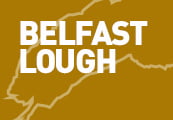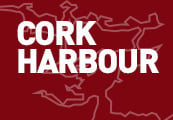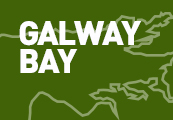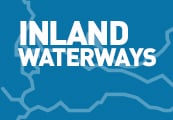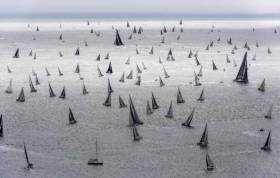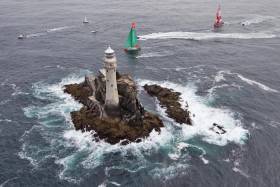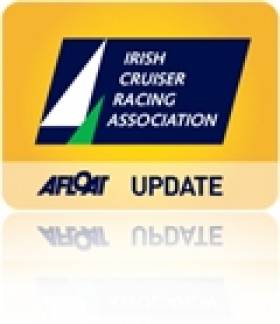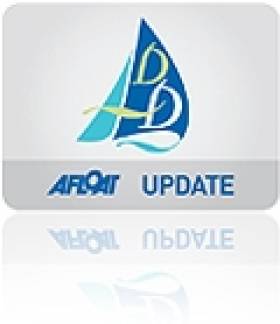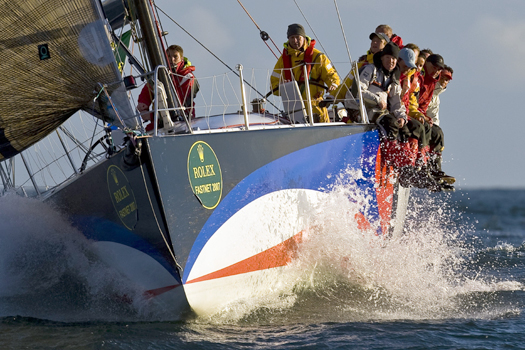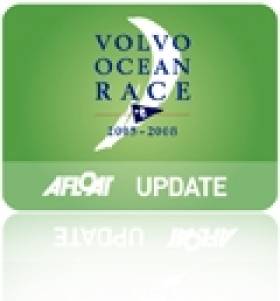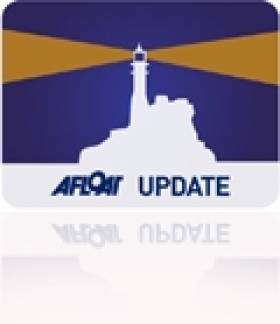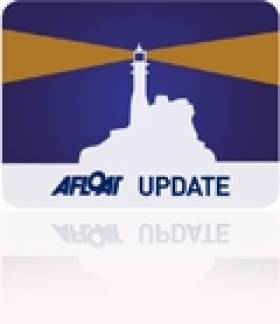Displaying items by tag: Fastnet Race
#FastnetRace - With the days ticking down till the 2017 Rolex Fastnet Race, Ocean Safety has published its free Fastnet Safety Checklist to ensure your yacht is ready for the rigours of the challenging seas around Fastnet Rock.
One of the most important items for the race for the race undoubtedly the liferaft, which will need a service before setting out from Cowes on Sunday, 6 August.
Ireland's CH Marine is a leading supplier of liferafts and services, hires and sells rafts. Both for leisure and commercial vessels.
Fastnet Race Joins VOR Qualifying Schedule
#VOR - The Rolex Fastnet Race has been named among the mandatory qualifiers ahead of the start of the 2017-18 Volvo Ocean Race.
The famed run from the Isle of Wight to Fastnet Rock in West Cork joins the new Lisbon-Alicante prologue — and a provisional transatlantic challenge over the summer — in the pre-race series that will serve as the first fight for dominance among the now eight-strong fleet.
‘Leg Zero’, as organisers have dubbed the new qualifier, comprises the traditional Fastnet Race route with an additional course from Plymouth to Lisbon.
Many VOR teams have used the Fastnet Race in their preparations – Team SCA and Abu Dhabi Ocean Racing being the most recent, in the 2013 race — but never before has it been a mandatory qualifier.
“I’ve done a few Fastnet Races, some were windy and some were light,” said Charles Caudrelier, skipper of Dongfeng Race Team in the 2014-15 VOR.
“It’s a nice course, very fun and interesting to sail around the coast, with the effect of the currents. It’s a good test and a very dynamic race, with interesting weather.”
According to race operations director — and VOR veteran — Richard Mason, the Fastnet Race “is on the bucket list of every ocean racer in the world.
“It’s famous for being very tricky and coastal. You can have no wind, you can have enormous amounts of breeze, and vicious seas, out near Fastnet Rock, it’s navigationally and tactically challenging, you don’t get much sleep.
“It’s the perfect race – an amazing thing to be a part of.”
Learn To Win The Fastnet Race: Irish Offshore Sailing School Knows How
How would you like to undertake an intense course of guaranteed Irish offshore racing training? Start as an absolute beginner on a strange boat in April next year. Dedicate yourself to it. Then by the end of June, the boat – aboard which you’re now very much an active and involved part of the sailing team – will have won a podium place in her class in the Round Ireland Race 2016.
Or even further into the realms of fantasy, how about starting your offshore sailing learning experience at a similar early season time in 2017, but aimed at the Fastnet Race? Or perhaps you’ll be continuing to build on 2016’s experience and successes. Either way, by the evening of Friday August 18th 2017 you and your shipmates are in the prize ceremony throng at Plymouth. And you’re absolutely bedazzled by the fact that you’ve won your class in the Rolex Fastnet Race 2017. Sounds good…? W M Nixon takes up the story.
When something sounds too good to be true, it usually is. And the scenario outlined above was still very much in the realms of fantasy eighteen months ago. Yet at Easter 2014, Irish Offshore Sailing started a course of intensive training for beginners aboard their two Jeanneau Sunfast 37s towards competition in the Round Ireland Race 2014 in June. And by the end of it, the better-placed of their two boats was very much in the frame.
Then for this year, they spread their wings still further, and once again started early in the season with the makings of a crew many of whom were complete beginners, but all were highly motivated towards doing the Fastnet Race, and doing well in it. They not only saw it through to the end, they were brilliantly successful and have a mighty trophy to prove it.
In theory, Irish sailors aiming for this scenario have it made. They have the advantage of the Dun Laoghaire to Dingle Race in late June as a convenient Fastnet Race qualifier. So to say that this trainee crew’s programme was “time-efficient” is under-stating it. The Dun Laoghaire-Dingle takes a long weekend, other intensive training could be put in at night and at weekends, and the Rolex Fastnet Race is done and dusted in a week.
So it’s about eight days off in all, nine at most. Thus for any crewmember who wished or could, there was still time and entitlement available for those in jobs to take an ordinary holiday before the bubbles had fully settled. Yet although our wannabe Round Irelanders and Fastneteers may have this wonderful training ground and courses of international repute right on their doorstep, getting involved from scratch has not always been easy.
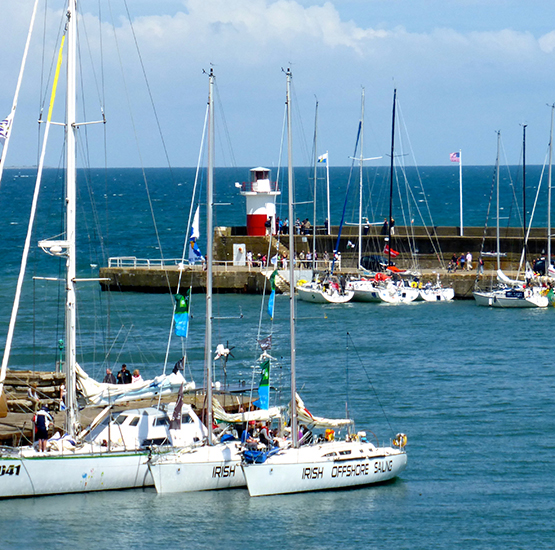 New boys on the block. The Irish Offshore Sailing School’s boats race ready and raring to go before the start of the Round Ireland Race, Wicklow June 2014. Photo: W M Nixon
New boys on the block. The Irish Offshore Sailing School’s boats race ready and raring to go before the start of the Round Ireland Race, Wicklow June 2014. Photo: W M Nixon
Sister-ships. The Irish Offshore Sailing School duo make their debut in the Round Ireland race 2014.
The enduring strength of the club structure in Ireland means that learning to sail here is not necessarily a straightforward process. A child from a club-oriented sailing family will be reassuringly guided into the club-administered ISA training programme. But while there is an increasing effort to provide club courses which are also attractive to adult beginners, the reality is that as the age increases and the complexity of the sailing being undertaken develops, the options for outsiders become increasingly limited unless they can attach themselves as crew on a boat already in the club system.
In the south of England, where there’s a large and affluent population providing a ready market, the situation is very different. Commercial sailing schools play a key role in meeting basic demand, and most such schools do reasonably well. But in the more specialised world of schools providing boats and sailing courses which take crews offshore and right up to the top grades of qualification with events like the Rolex Fastnet Race as the ultimate objective, a thriving industry-within-an-industry has developed.
Former pupils stay with their offshore schools for extended periods - in effect in permanent post-grad mode - as their offshore sailing schools, having provided them with training, now also provide them with a ready-made camaraderie, an instant virtual club environment.
So successful has this become that in the Rolex Fastnet Race last month, there were 32 offshore school yachts taking part. In other words, more than 10% of the 309-strong IRC fleet. So significant is this development that the sailing schools have their own Fastnet Race prize, the Roger Justice Trophy. Yet despite the fact that the bigger UK offshore sailing schools are highly resourced with relatively new race-proven boats, the winner of the Roger Justice Trophy in 2015 was Irish Offshore Sailing’s Sunfast 37 Desert Star, a veteran which has been used for sail training for a dozen years and more. A highly dedicated sailor and teacher – Ronan O Siochru has successfully transferred his inherited teaching skills to sailing. Photo: W M Nixon
A highly dedicated sailor and teacher – Ronan O Siochru has successfully transferred his inherited teaching skills to sailing. Photo: W M Nixon
Desert Star was also second overall of all the Irish entries in the Fastnet, so her skipper Ronan O Siochru was most deservedly the Afloat.ie Sailor of the Month (Offshore) for August. Those who know Ronan O’Siochru and what he does will have known just how thoroughly this recognition – and the Fastnet Race trophy – was earned. But although the rest of the sailing community in the greater Dublin Bay area will be aware of the activities of the two Irish Offshore Sailing sister-ships as they go about their training programme – often at anti-social hours of the night, and often in adverse weather – the achievements of Ronan O’Siochru and his team should be a banner of hope for all Irish sailing.
Ronan O’Siochru (32) is from Cork, but he’s from a non-sailing family in Bishopstown. However, one of the keys to his current success in his chosen area of sailing is that he’s from a long line of teachers. At least three generations of them, teaching away. But somehow he got the boat and sailing bug in Kinsale before he was even into his teens. When asked how he got himself to Kinsale from Bishopstown to pursue this developing passion, he admits there were times when it could be a very long hitch-hike for a little boy in the rain.
Yet gradually he built up contacts in Kinsale sailing, and his ready enthusiasm to learn and to crew soon saw him often afloat in an increasing variety of boats. The urge to own his own boat became a priority, and he set himself at it with typical dedication, working in a vegetable shop at £3 an hour (this was in pre-Euro days) until he’d the £600 to buy a Flying Fifteen of a certain age.
For most young Irish sailors, that would have been the beginning of a lifelong interest of boat ownership with self-maintained craft sailed within a local club context. But the young O’Siochru had visions of greater things. He realized that having an internationally-recognised Yachtmaster (Offshore) Certificate was a passport to interesting sailing jobs worldwide, so he set himself on this course and in time found himself within the orbit of the legendary Bob Salmon, veteran of more than fifty Transatlantic Crossings, and a proponent of mini-Transat racing.
When the young O Siochru – now 21 – asked Salmon what would be the best way forward to a Mini Transat Campaign, the suggestion was he should buy a little boat and sail her to Iceland single-handed as a charity fund-raiser for starters, and then they’d see what could be built on that.
The result was the smallest 21-footer you’ve ever seen caught out in a vicious Atlantic storm west of the Outer Hebrides, and a young Corkman getting to know the crew of the Barra lifeboat very well indeed, but for all the wrong reasons.
So it was back to the grindstone of working away as a Yachtmaster and a Yachtmaster Instructor in whatever positions became available. With his strong inheritance of the teaching gene, his proven ability to recover from setbacks, and his precious gift of being able to convey a love of sailing for its own sake to those he was teaching, Ronan O Siochru was leading a very busy and fulfilling existence, but “peripatetic and undomesticated” would only begin to describe his way of life.
However, during his ventures under sail he met a girl in Gibraltar, and it was time to change tack. She was from Birmingham, she was called Salome (she really was and is), they got married, and the move towards having his own boats in his own sailing school in Ireland became a priority.
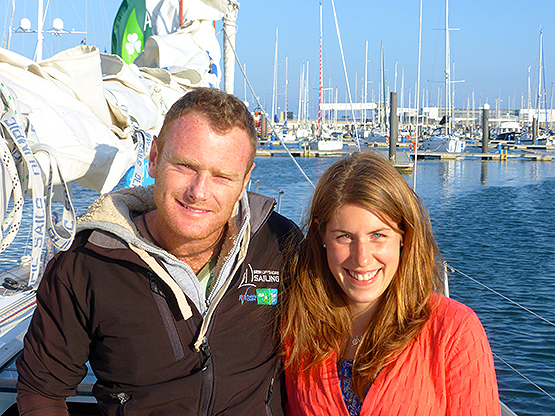
She tamed him……Ronan O Siochru and his wife Salome in Dun Laoghaire Marina. Photo: W M Nixon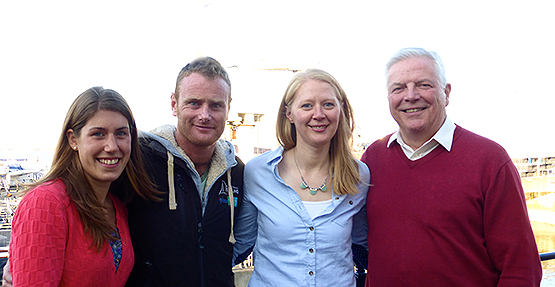
Some of the IOS team (left to right) are Salome & Ronan O Siochru, Louise Gray who raced in the Fastnet, and Peter Beamish who is one of the school’s instructors as well as being its business mentor. Photo: W M Nixon
He’d been diligently saving everything he could from instructing and yachtmastering, so when in the winter of 2009-2010 he heard that Port Solent were selling off a raft of 2002-built Jeanneau Sunfast 37s, they bought one as the basis of a fleet, and Ronan and Salome sailed the new boat home to Ireland in January 2010.
It was a crazy time to be starting any sort of business with the recession gripping Ireland, but the reckoning was that if they could survive the bad times then they’d thrive in the good. Not that anything was easy. Ireland’s Department of the Marine makes it very difficult to get a boat certified – it can cost around €25,000 per boat in extra equipment to achieve this – while the Irish Sailing Association is so club-oriented that the new Irish Offshore Sailing School found it much more satisfactory to deal with the RYA for guidance.
They set up shop in Dun Laoghaire Marina, for much as Ronan’s first love is sailing the Cork coast, he’d no doubt that the relative size and concentration of the population of Dublin, with its high proportion of affluent and energetic young professionals, made a Dublin Bay location essential for such a tightly-focused business.
Now that success has been achieved, it all looks like a smooth progression, but heaven knows there were times it was anything but. However, the sheer enthusiasm of Ronan O Siochru and his crews began to interest other sailors in Dun Laoghaire Marina, and top skipper Peter Beamish, recently retired from an international career in management in American conglomerates, was interested both with a view to acquiring a few certificates himself, and also maybe in becoming an instructor too. He is now part of the team, and finds his extensive business management experience has additionally brought him aboard as mentor and financial advisor.
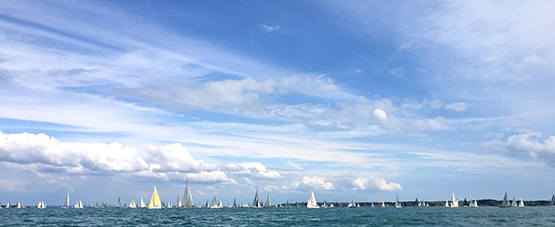
Are we really supposed to race against all those boats? The first sight of the Fastnet’s gathering starting line fleet was a bit of a culture shock for Desert Star’s crew. Photo: Louise Gray

Mixing it with the big boys. The Maxi 72 Momo - top big boat in the final results – and the hundred footer Leopard (extreme right) come sweeping through past Desert Star in the Needles Channel. Photo: Louise Gray
Somehow they not only hung in, they expanded, and when the demise of Glenans Ireland made a Baltimore-based Sunfast 37 called Sherkin available for sale, they added this sister-ship to their lineup, and the sunny start to the Round Ireland Race 2014 with the two IOS boats setting off with the rest of the fleet underlined the fact that here indeed was a very significant new force to be reckoned with in Irish sailing.
It has been onwards and upwards ever since. The crew for the Fastnet campaign with Desert Star from April through to late August reflected both the way in which Dublin has drawn in young professionals from near and far, and also the fact that Ronan O Siochru and his school were already receiving marked respect for what they do even before the Fastnet win set them in lights.

Finally clear of the crowd in the Solent – Desert Star settling down nicely with the Needles at the west point of the Isle of Wight astern, and room ahead to work the bays out of the worst of the tide.
Thus people from elsewhere were and are prepared to commit to travel to Dun Laoghaire for each part of the programme afloat, the final lineup when the Fastnet Race started on August 16th being Ronan O Siochru (Cork) skipper, Kristian Aderman (Sweden) first mate, Dr Rupert Barry (Dublin), Symeon Charalabides (ex-Greece, living Dublin), Dave Garforth (ex-UK, living Cork), Louise Gray (Monaghan, living Dublin), Dr Sam Lamont (Belfast), and David McDonnell (Cork).
It was a tricky Fastnet for every boat, and if the weather chips didn’t fall the right way for your boat size and rating, then it was more a matter of how you did against comparable boats. In this, Desert Star did very well indeed, while her performance against other sailing school boats was champion stuff.

Sunrise on the threshold of the Atlantic. The Isles of Scilly are finally astern, and Desert Star is starting to feel the breeze which will carry her out to the Fastnet
In the early stages, they made every effort to minimize the effects of adverse tide, playing the big bays of England’s south coast in classic Cork style such that when they got to the Lizard the company they were keeping showed they were doing more than okay. Then outward bound towards the Rock getting through that demanding gap between the big Seven Stones Separation Zone and the Isles of Scilly, they managed to find their way through the shortest route southwest of the zone and north of the islands, then when they came round the Fastnet with the new breeze settled in, the going was good as they got there before it was totally on the nose, while the company all around them was even more encouraging.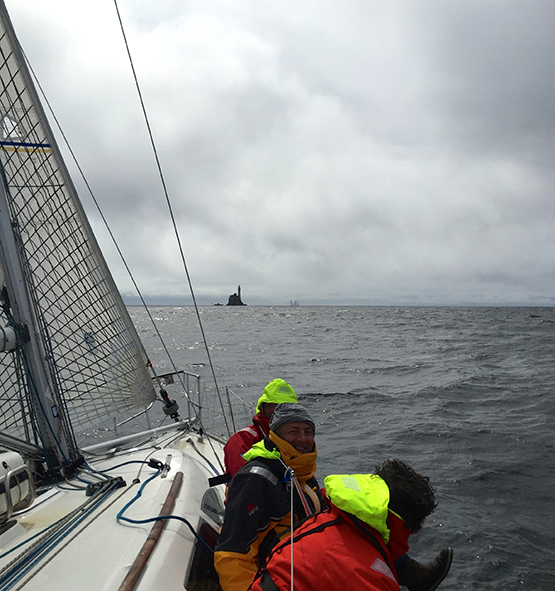
The most famous racing mark in the world, and Desert Star laying it nicely to round the Fastnet Rock. Photo: Louise Gray
There was rain on the way to the finish at Plymouth, but it brought a fair wind, and every inch of the way Desert Star was improving on her overall position. They arrived in to find the countdown already under way towards the mighty prize-giving, and for a while the overloaded results computer had them even better placed than expected, but it due course it got itself sorted out and Desert Star was confirmed as winner of the Roger Justice Trophy.
Our concluding three photos say it all. We caught up with Ronan this week in Dun Laoghaire, he was back to the grindstone running a five day Yachtmaster course. Except that he doesn’t think it’s a grindstone – he thinks it’s a wonderful thing to be able to do. He’s grateful to be able to do it, and is an inspirational teacher. We’ll be returning to Ronan O Siochru and the Irish Offshore Sailing School in the near future when his season is finally winding down a bit, and he has been able to catch up on sleep. Meanwhile, those of us who had been concerned for the future of Irish sailing generally can sleep a little easier thank to his efforts and idealism.
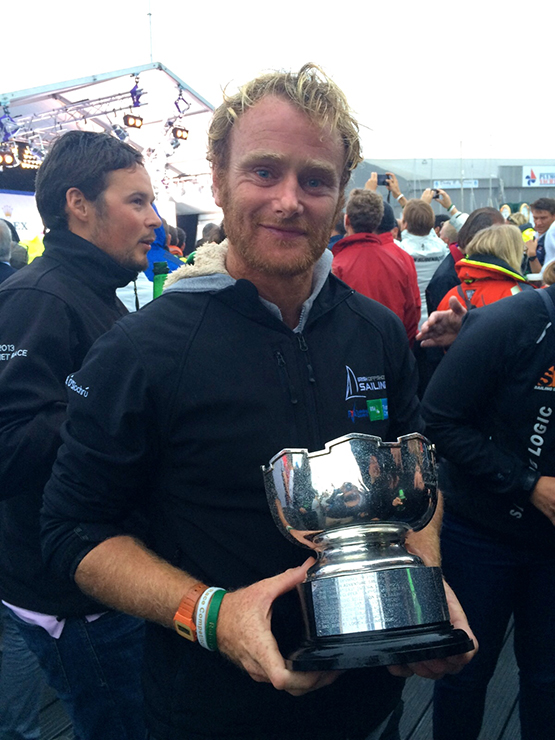
Still can’t quite believe it - the skipper and his trophy in Plymouth, Friday August 21st 2015.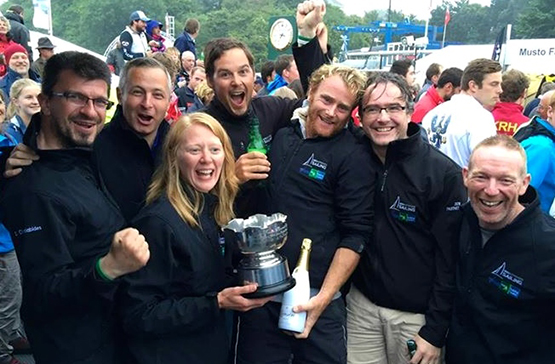
Shipmates and celebrating. Desert Star’s Fastnet-winning crew are (left to right) Symeon Charalabides, Sam Lamont, Louise Gray, Kristian Aderman, Ronan O Siochru, Rupert Barry, and David Garforth. Photo: David McDonnell
It’s official! Total crew lineup are (left to right) David McDonnell, David Garforth, Rupert Barry, Symeon Charalabides, Ronan O Siochru, Kristian Aderman, Louise Gray and Sam Lamont. Photo: Rolex/RORC
#commodorescup – The two managers behind both of Ireland's Commodore's Cup victories have 'stepped down' from the job, an executive meeting of the Irish Cruiser Racer Association (ICRA) heard last month. A successor for both Barry Rose of Royal Cork YC and Fintan Cairns of the Royal Irish YC is being sought by the cruiser–racer body to defend the international title next season on the Solent. The midlands meeting heard ICRA's shore management performed 'a very important role as a focal point and coordinator for the whole team process' .
It was imperative, according to the meeting, chaired by Howth YC's Nobby Reilly, that ICRA would continue to perform that role in the future. The Portlaoise gathering of April 20th also heard of the necessity to start the process of 'achieving team or team selection' to challenge in 2016. The quest for team sponsorship also needs to be underway.
Separately, Royal Cork's Commodore's Cup team captain Anthony O'Leary has told Afloat.ie of his 'fervent hope' to be involved with the 2016 defence of the Cup that he has won twice. However, his Ker 39, Antix has been sold to Sweden and this year O'Leary and his Antix crew are campaigning offshore in the renamed Ker 40, Catapult. They take in RORC's Myth Of Malham this week before June's Dun Laoghaire to Dingle race. They're both warm–up races for the season's big one in August, the sell–out Fastnet race.
The 2016 Commodore's Cup changes will see the reintroduction of a small boat for the team competition next year it has also been announced. The Royal Ocean Racing Club (RORC) has agreed to a number of changes that they say will have 'a positive impact' on the number of teams taking part in the event held at Cowes, Isle of Wight between 23 and 30 July 2016.
The first is the requirement of every team to have a small boat with a rating between 1.000 and 1.049. 'Many teams in the last event believed that it was hard to be competitive without having three boats that were close to the top of the allowable rating band, as was the case of last year's winning Irish team,' said RORC CEO, Eddie Warden Owen.
As the Irish Times Sailing Column reports, lowering the rating band to 1.000 will make it easier for J109s to enter, to include boats like the JPK10.10, A35 and the new Sunfast 3200, and reduce the cost of competing.
Read also: How Ireland won the Commodore's Cup and Anthony O'Leary, Sailor of the Year
#d2d – The canting-keel Cookson 50 Lee Overlay Partners skippered by Dun Laoghaire's Adrian Lee is the latest high profile entry into this June's Dun Laoghaire to Dingle race. The Royal St. George yacht is a proven offshore winner, taking the inaugural 2009 RORC Caribbean 600 race and overall victory (as Chieftain) in the 2007 Fastnet Race.
Most recently, in 2013, the globe trotting 50–footer set a course record of 2 days 53 minutes and 40 seconds and the overall win in the 360– mile race from Dubai to Muscat in Oman. In what is looking like a potent line-up for the 12th edition of the National Yacht Club race, this Dun Laoghaire entry joins the Commodore's Cup winning Ker 40, Catapult skippered by Anthony O'Leary of Cork, Afloat's 2014 Sailor of the Year.
Go LulaBelle! How Ireland Won The Round Britain & Ireland Race
#rorcsrbi – For twelve days, Ireland's sailing and maritime community followed with bated breath while the fortunes of Liam Coyne and Brian Flahive with the First 36.7 Lula Belle waxed and waned in the storm-tossed 1802-mile RORC Sevenstar Round Britain & Ireland Race. Last Saturday, they triumphed, winning the two-handed division and two RORC classes in this exceptionally gruelling marathon. W M Nixon delves into the human story behind the headlines of success.
It used to be said that Irish seamanship was the skilled and stylish extrication of the vessel from an adverse and potentially disastrous situation in which she and her crew shouldn't have been next nor near in the first place.
While we may have moved on a bit from that state of affairs with a less devil-may-care approach to seafaring, there's no escaping the fact that this morning we can now look back at two remarkable Irish victories in topline international offshore events in recent years in which both crews overcame major setbacks and situations, rising above very adverse circumstances which could well have deterred sailors from other cultures where the philosophy is not underpinned by the attitude: "Ah sure lads, things aren't good. Not good at all. But let's just give it a lash and see how we go".
It was seven years ago when a full entry list of 300-plus boats was slugging westward down the English Channel in the first stages of the Rolex Fastnet Race 2007. Already, the start had been postponed 24 hours to allow one severe gale to go through. But in an event still dominated by the spectre of the 15 fatalities in the storm-battered 1979 race, most crews were hyper-nervous about another gale prospect, and by the time the bulk of the fleet was in the western English Channel, many succumbed to the allure of handy ports to lee such as Plymouth, and in those early days of the race something like 48% of the fleet retired.
But aboard Ger O'Rourke's Cookson 50 Chieftain out of Kilrush on the Shannon Estuary, they were well into their stride. That year, the boat had already completed the New York to Hamburg Transatlantic Race, placing second overall. But owing to her Limerick owner's quirk of never confirming the boat's entry for the next major event until the current one is finished, they found themelves only on the waiting list for that year's already well-filled Fastnet Race entry quota.
Chieftain was 46th on that list. Yet while those who had made an early entry fell by the wayside, steadily this last-minute Irish star rose up the rankings. With three days to go, Chieftain got the nod. They went at the racing after the delayed start as though this had been a specific campaign planned and carefully executed over many months with a full crew panel, instead of a last-minute rush where crew numbers were made up by a couple of pier-head jumpers who proved worth their weight in gold.
Yet then, as the new strong winds descended on the fleet as the group in which Chieftain was already doing mighty well was approaching the Lizard Point, the troubles started, with gear failing and boats pulling out left and right. But the Irish boat was only getting into her stride. A canting-keeler, she could be set up to power to windward in a style unmatched by bigger craft around her. Approaching the point itself in poor visibility to shape up for the fast passage out to the Fastnet Rock with even faster sailing, things looked good. And then the entire electronics system aboard went down, and stayed down.
Here they were, not even a third of the way into a race which promised to be rough and tough the whole way, but a race in which they would at least have been expecting know their speed, performance and position down to the most minute detail. Instead, they were in an instant reduced to relying on a couple of tiny very basic hand-held GPS sets, and paper charts.
Ger O'Rourke's Chieftain sweeps in to the finish at Plymouth to win the 2007 Rolex Fastnet Race overall
Those paper charts were little better than pulp by the end of a very wet race in an inevitably extremely wet but searingly fast boat. But they did get to the end, and with style too. They won overall and by a handsome margin. It was the first-ever Irish total victory in the Grand National of Ocean Racing. The owner-skipper had to go up the town to buy himself a clean shirt for the prize-giving in the Plymouth Guildhall.
Yet when Ger O'Rourke's Chieftain swept into Plymouth and that triumph just over seven years ago, the boat was in much better racing shape than Liam Coyne's First 36.7 Lula Belle when he and Brian Flahive completed the final few miles back into Cowes around midday last Saturday to finish the 1802-mile Sevenstar Round Britain & Ireland Race.
Lula Belle had many gear and equipment problems after an extreme event where the natural pre-start nervousness had been heightened by a reversal by the Race Management of the originally clockwise course as the 10th August start day approached. It would have been folly to send the fleet westward into storm force westerlies in restricted waters. Eastward was the only sensible way to go.
Then the arrival of the remains of Hurricane Bertha – which seemed to be finding new vigour – led to new tensions with the start being postponed from midday Sunday to 0900 Monday. It was disastrous from a general publicity point of view. But it would have been irresponsible to send a fleet of boats – some of them mega-fast big multihulls – hurtling towards the ship-crowded narrows of the Dover Straits beyond the limits of control in a Force 11-plus from astern.
Even when they did race away, it was with a Force 8 plus from the west, with the Irish crew recording 42.5 knots of wind aboard Lula Belle (and from astern at that), before they lost all their instruments from the masthead on the first night out. For a double-handed crew, that was a very major blow. Two-handers are allowed to use their auto-pilot, and if all the wind indicators are functioning in proper co-ordination with it, then the boat can sail herself along a specific setting on the wind. It's as good having at least one extra hand – and a skilled and tireless helmsman at that - on board.
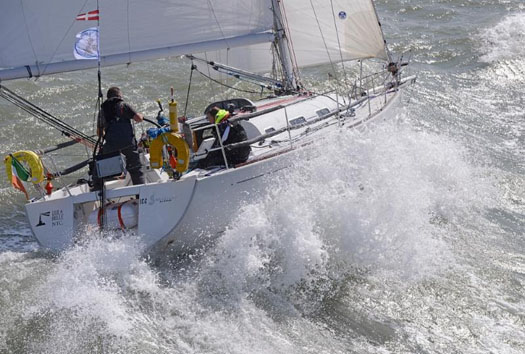
Lula Belle on her way out of the Solent with 1800 miles to race and everything still intact. Photo: Rick Tomlinson
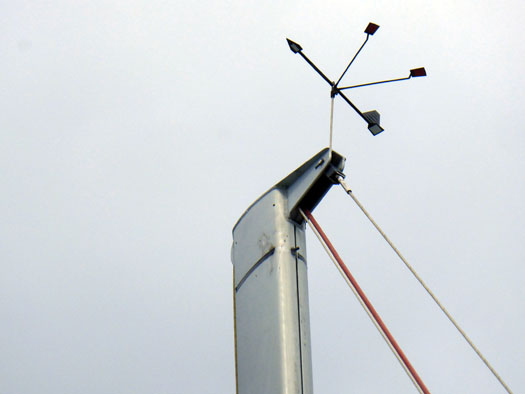
There it was – gone. After the first night at sea, Lula Belle's masthead was bereft of everything except an often defective Windex. Photo: W M Nixon
Fortunately the auto-pilot itself was still working on its own, and they became well experienced in setting the boat on course and then trimming the sails to it in a continuous process which worked well except when the seas were so rough and irregular that they had to hand steer in any case, albeit with the apparent wind indicated only by the sole survivor of the masthead units, the little standard Windex. But it must have been damaged when everything else was swept away, as from time to time it jammed. When that happened, the only wind indicators available to the two men were the Sevenstars battleflag on the backstay, the tell-tales on the sails, or a moistened finger held aloft, as neither were smokers.
Despite this, they made their way north through the North Sea and all round Scotland and its outlying islands and right down the western seaboard of Ireland as far as the Blaskets before things went even more pear-shaped. In fact, the wheels came off.
Their ship's batteries had been showing increasing reluctance to hold power, essential for the continuing use of the autohelm and the most basic need for lighting and any still-usable electronic equipment including the chart plotter. But thanks to a trusty engine battery, they could start the motor to bring the ship's batteries back up to short-lived strength. Yet while approaching the Blaskets, the engine refused to start, and nothing they could do would coax it back to life. Inevitably they lost power, and for the final 495 miles of the race – the equivalent of 78% of a Fastnet Race - the boat was sailed and navigated entirely manually, with the required navigation lights provided by modified helmet lamps.

The chart plotter shows only too clearly where power was lost completely just north of the Blaskets. Photo: W M Nixon
Yet they finished well last Saturday, around noon on August 23rd after twelve days racing. They won the two-handed division overall, they won Classes IV & V, and they placed sixth overall in a combined fleet in which big boats with a strong element of professional crewing dominated. So who are Liam Coyne and Brian Flahive, and what about Lula Belle, the heroine of the tale?
Afloat.ie caught up with them on Thursday morning in Dun Laoghaire marina, where they'd got home an hour or so before dawn to grab a quick sleep of a few precious hours before awakening to more sunshine than they'd experienced for a long time, as the Round Britain & Ireland was raced across an astonishingly sunless sea. As for the 450-mile passage home to Dublin Bay, it had been achieved through mostly miserable weather and an enforced and brief stop in Plymouth to try to get a final solution to the continuing electric problems, which had defeated the finest minds in Cowes.
But such hassle fades when the return home is completed, and the Lula Belle crew were in great form. They complement each other. Brian Flahive is from Wicklow and he's a studious, thoughtful type. He turned 31 just three days after the win, making it his best birthday ever, and a fitting highlight in a sailing CV which continues to develop, and began with local sailing and training courses with Wicklow Sailing Club after his sister Carol had acquired a Mirror dinghy.
Since then, Carol's seagoing has taken a slightly unexpected turn as she found her vocation in the lifeboat service, and that is now her main interest afloat - she is a helm on the Wicklow lifeboat. But her younger brother Brian was soon hooked on pure sailing, and from the Mirror he soon went on the 420s where his enthusiasm was noted by local keelboat owners, who in turn recruited him aboard, and soon he was noted by those assembling offshore racing crews too.
When you've talent, enthusiasm and time available, the word soon gets about in the limited recruiting pool available to Ireland's offshore racing folk. Soon, young Flahive was spreading his wings with his home port's biennial Round Ireland race, and participation in Irish Sea Offshore Racing. He proved adept at and interested in two-handed sailing in particular, and soon got to know another relative newcomer to the Irish Sea offshore racing scene, Liam Coyne.
Liam Coyne is 47, and something of a force of nature. There's a mischievous twinkle to his eye, but there's a very serious side to him too, even if – as when he admits he's extremely competitive – it's done in the best of humour. He's from Swinford in County Mayo, where any knowledge of boating might relate to the big lake of Lough Conn nearby. But as he left Mayo for the USA just as he was turning 20, his passionate sailing involvement has been entirely generated during his more recent life in Dublin.
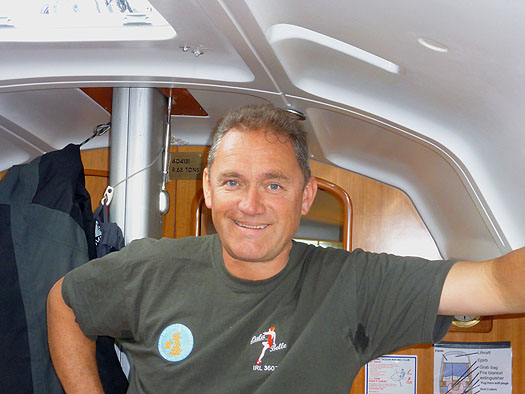
There's a mischievous twinkle, but Liam Coyne makes no secret of his competitive nature. Photo: W M Nixon
Back in the 1980s, well before Australia took off as the destination of choice for energetic and ambitious young Irish people, America was still the Land of Dreams. Coyne's teacher of English in Mayo was so sure of this that one of his courses was built entirely around the USA's immigration examination. He did a good job, young Coyne made the break, and he started to fulfill his ambition of getting to all the American states by spending time – sometimes quite a lot of it – in 26 of the States of the Union. Eventually with a winter approaching, he found the building site he was quietly working on in Boston was due to close completely for the colder months. But he managed to swing a job selling Firestone tyres (sorry, "tires") from the local agent's shops. It was a union created in heaven. Liam Coyne and tyres – the bigger the better – were made for each other.
He prospered in the tyre business in Boston and enjoyed his work, but there was always the call of home and a girl from Swinford who had qualified as a teacher. So he came back to Ireland in 1998, set up in the tyre business in Leinster, married the girl and settled down in south Dublin to raise a family.
Came the boom years, and the tyre business prospered mightily. Liam Coyne Tyres had five depots and employed 48 people. He was mighty busy, but seeking relaxation. So on the October Bank Holiday Monday in 2005, he and his wife went to the Used Boat Show at Malahide Marina and by the time they left, Alan Corr of BJ Marine had sold them a handy little Beneteau First 211, their first boat.
His knowledge of boats and sailing was rudimentary to non-existent. His maiden voyage, the short hop of 12 miles from Malahide to his recently-joined new base at Poolbeg Y& BC in Dublin port, took all of 14 hours as the tyro skipper battled with the peculiarities of tide and headwinds, happily ignoring the potential of the little outboard engine on the transom even though, as Alan Corr cheerfully told him later, it could have pushed the boat all the way to Arklow in half the time.
But he was enchanted by this strange new world, and the camaraderie of the sailing community as expressed in Poolbeg. He made a tentative foray into the club's Wednesday night racing, and was even more strongly hooked. But even though those Wednesday club races in the inner reaches of Dublin Bay were such fun that from time to time he still returns to race with his old clubmates at Poolbeg, he knew that his ambitions would dictate a move into a larger boat, and the bigger world of Dublin Bay sailing. So when the next Dublin Boat Show came along, he went to it and ended up buying a Bavaria 30 from Paddy Boyd, who was marketing Bavarias in the interval between being Secretary General of the Irish Sailing Association, and Executive Director of Sail Canada.
Paddy Boyd wised him up to the Dun Laoghaire sailing scene, and which club he might find the most congenial while being suited to his ambitions. For Liam Coyne was discovering offshore racing, and particularly the annual programme of the Irish Sea Offshore Racing Association. He liked everything about ISORA, the friendships, the willingness to help and encourage newcomers, and the pleasant sense of a mildly international flavour between the English, Welsh and Irish contingents.
One of his fondest memories is of taking his Bavaria 30 across to North Wales for the annual Pwllheli-Howth race which traditionally rounds out the season, and is often blessed with Indian summer weather. As he headed away from Dublin Bay, he suddenly realised it was the first time he had ever left Ireland under his own command. All previous exits had been on scheduled ships or planes. It was a very special moment.
Yet while he treasures the memory of such special moments, it wouldn't be Liam Coyne if he wasn't moving on. He'd relocated his base of operations to the bigger scene of the National Yacht Club and Dun Laoghaire, and developed his taste for double-handed offshore racing and its link to a group whose only common denominator seemed to be that many of them shared an enthusiasm for racing vintage Fireballs in Dun Laoghaire harbour in the winter.
But in the summer, keelboat offshore racing with just two on board was increasingly their main line, and he was soon on terms of friendship with the likes of Brian Flahive, Barry Hurley and others, while the double-handed class in events like the Dun Laoghaire-Dingle, the Round Ireland, and the Fastnet itself were coming up on the radar.

The newly-acquired First 36.7 which became Lula Belle greatly broadened the scope of Liam Coyne's offshore racing. Photo: W M Nixon
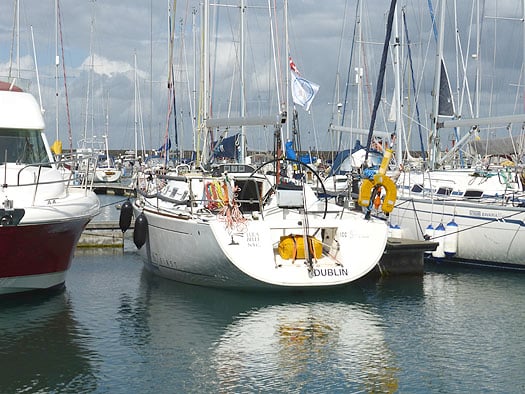
The First 36.7 is of a useful size to be a very pleasant family cruiser, but Lula Belle has been a multi-purpose boat since Liam Coyne bought her, with the emphasis on double-handed offshore racing, and the longer the course, the better. Photo: W M Nixon
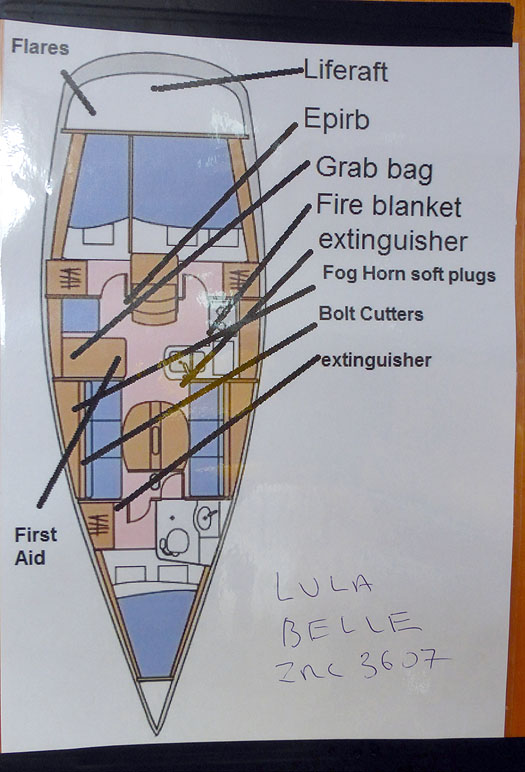
Lula Belle's layout - the accommodation of a cruiser/racer with extras installed for serious offshore racing, but for proper cruising they'd also be required. Photo: W M Nixon
Having made his mark offshore partnered with Brian Flahive on the Bavaria, he very quickly moved up to the almost-new First 36.7 Baily, bought from Tom Fitzpatrick of Howth. His name of Lula Belle for the boat was inspired by a recently-deceased aunt who had invariably addressed all of his sisters as "Lula Belle" when requesting something like a cup of tea. It's certainly a distinctive name, and it was beginning to feature regularly in short-handed and fully-crewed offshore racing reports when Ireland fell off the economic cliff around 2007.
The tyre business was hit particularly hard, for they're items whose replacement people can try to avoid by shifting used tyres around on and between vehicles to get the last piece of tread usable. But fortunately, one of his key contracts was in the heavy industrial area, where they use tyres so big your everyday motorist has no notion of them, yet legal safety working requirements dictate their regular replacement.
Despite this, at one stage his fine workforce of 48 had become effectively just two, while three of the five depots were closed. "I can tell you" he says, "there were times when we were glad enough the wife had kept her teaching job". And they were raising a family, eventually with three kids with a much-loved holiday home at Enniscrone in southwest Sligo. Then too he had this 36ft racing boat too. Yet all his fine assets and the value of the family home in Dublin had effectively been slashed by at least 50% and often more.
But somehow he kept going, and he even continued to race offshore. By this time one of the leading figures in the Irish short-handed sailing scene, Barry Hurley, had moved to Malta, and when he was recruiting crew for a friend with a Grand Soleil 40 for the annual 620-miles Middle Sea Race from Valetta in late October, he filled four berths with able-bodied crew from Dublin including Barry Flahive and Liam Coyne.
That race brought something of another epiphany to match that moment of pure joy at realizing he was skippering his own boat out of Irish waters for the first time. They'd come through the Straits of Messina eastward of Sicily, and next turn of the course was the volcanic island of Stromboli. It was a blissfully warm summer's night, and Liam was at the helm in just shorts and shirt, enjoying the sail and revelling in the race.
Stormboli was gently erupting just enough to show it was there, and ideal to be a mark of the course. "I'll tell you," says Liam, "it was a very long way indeed from your usual October night in Swinford". The magic of the moment reinforced his ambition to see his business through the recession and out the other side, which he has now achieved with busy depots in Navan and Dublin, and staff back above the twenty mark. Yet oddly enough, it also reinforced a shared ambition with Brian Flahive to do the four-yearly Seven Stars Round Britain & Ireland Race, when conditions up in the northern seas off Shetland and across towards the Faroes can often make an October night in Swinford seem like the balmy Mediterranean by comparison.
But the idea just wouldn't go away, and they put down their names for the 2014 race. With the economy coming out of intensive care and two good managers running his two depots and the three kids though the very young stage, Liam Coyne felt he could take off the time for this major challenge. But even so it was done without any form of shore management support, and in fact he managed to mix it with some family cruising – to which the boat is surprisingly well suited – by taking his young son Billy (10) and daughter Katie (8) along with him for a leisurely delivery to Cowes by way of many of the choice and picturesque ports along the south coast of England, where his wife and the youngest child joined the party to see them off.
That was in the last of the summer. By the time the starting date was upon them, it was as if a giant and malevolent switch had been activated. The weather was horrible, and even when Bertha had finally grumbled along on her way, it was anticipated that the rush of bitterly cold north winds she'd drag down from the Arctic in her wake would be every bit as unpleasant.
Then came the complete reversal of the course, and the postponement of the start. For a crew who were being their own shore managers and technical support team, it added a last minute mountain of research work on the shape the weather might be when they finally got away, and all the mental strains of waiting overnight for the start. As the lowest-rated boat in the entire fleet, they may have had the consolation of knowing that if they finished with just one boat behind them then they wouldn't be last on corrected time. But by being the low-rater, they would probably finish so long after everyone else that any general celebration would be long over.
That said, when a double-handed team have already successfully bonded, they're better at withstanding the strain of an enforced wait for a delayed start than a larger crew. I can remember only too well when the RORC Cowes to Cork race of 1974 was postponed for ten hours by the then RORC Secretary Mary Pera. A Force 10 sou'wester was making the Needles Channel a complete maelstrom on the spring ebb, but it was forecast soon to ease, so we were to be sent off on the evening ebb.
To get through the wait, it seemed best to stay well away from the boat and have a quiet day if at all possible. But aboard the 47-footer on which I was sailing, there were action men who decided it was time for a party lunch. So although I slunk away alone up the back streets of Cowes (Kensington-on-Sea it was not), and found a little café where the owners were persuaded to provide lunch of boiled potatoes and steamed fish instead of the usual nausea-inducing fish'n'chips, back on the waterfront others meanwhile had different ideas. A massive former rugby international in our crew decided the best way to pass the time was a champagne reception in one of the Cowes clubs followed by a bibulous lunch, and he persuaded several shipmates to join him, though they were circumspect in their consumption while he went at it as though it would be the last festive lunch in his life.
When we finally got racing the wind had indeed eased, though things were still rough enough in the Needles Channel, where we slammed into a head sea with such vigour that the Brookes & Gatehouse speedo impellor – normally a particularly stiff-to-move bit of equipment – was shot into its hull housing so totally we assumed it had broken entirely. It took a few seconds to realize what had happened, and it worked again happily enough once it had been pushed back into working position with the usual robust heave.
However, our mighty rugby forward was not so happy. He was not a happy budgie at all. The news is that, though you may be battering along noisily but successfully with endless bangs and squeaks and groans of one sort or another, when an international rugby forward of classic size gets massively seasick, a new dimension enters the sound and vibration scene - it's as if the entire boat is shuddering from end to end.
But enough of that. In Cowes on the morning of Monday August 11th 2014, it was still blowing old boots from the west , but they tore away downwind like there was no tomorrow. And for some, as far as racing was concerned, there wasn't. Any tomorrow, that is. There were several overnight retrials that set out to be temporary but became permanent. Aboard Lula Belle, however, they were still going strong, but after recording that gust from astern of 42.5 knots (which meant it was pushing 50), the masthead broccoli decided it had had enough, and made its exit.
Some time long before the race, Liam had decided he'd ensure the minimum use of power by having a LED tricolour masthead light, and a technician had been sent aloft to fit it. But that first night, it took off on its own, but taking much else with it, and leaving a beautifully clean masthead, but damn all information for those down below other than a Windex with an increasing tendency to jam.
And already the sails were suffering, for although their gybes were hectic enough, they didn't have to worry about check-stays or runners. But the downside of that was the well-raked spreaders, which helped support the mast in the absence of any aft support rigging other than the standing backstay. The inevitably prominent upper spreader-ends were chafing holes in the mainsail which, despite repairs, were enormous by the finish.
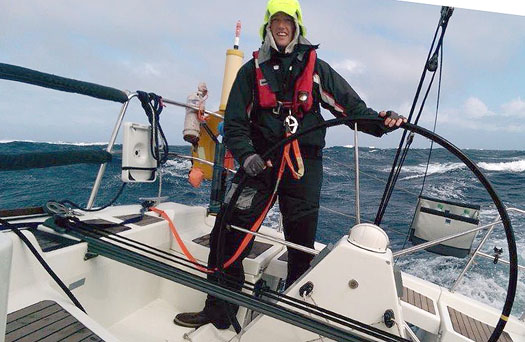
Speed at sea – Brian Flahive on the wheel as Lula Belle puts in the kind of sailing which knocked off 200 miles a day. Photo: Liam Coyne
But they blasted on, roaring on a reach up through the North Sea with Lula Belle doing mighty well, as the more extreme boats such as their closest rival, the Figaro II Rare, weren't quite getting the conditions to enable them to fly, whereas old Lula Belle was knocking off 200 miles in every 24 and saving her time very nicely.
North of the English/Scottish border, the strong winds drew ahead. The forecast, however, was for westerlies, so some boats in front laid markedly to the westward looking for them. But Coyne and Flahive sailed a canny race. What they knew of the weather maps suggested very slow-moving and messy weather systems with lots of wind. And from ahead. They reckoned the prospect of westerlies was just too good to be true. And they were right. On the entire leg up to Muckle Flugga, the most northerly turn, they never strayed more than five or six miles from the rhumb line, and thus they sailed the absolute minimum distance, albeit in very anti-social conditions, to get to the big turn.
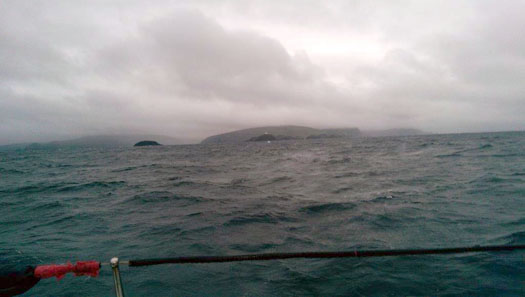
The sunless sea, with Lula Belle getting past Muckle Flugga on Shetland, the northerly turning point of the RB & I Race, and the sky promising plenty of wind Photo: Liam Coyne
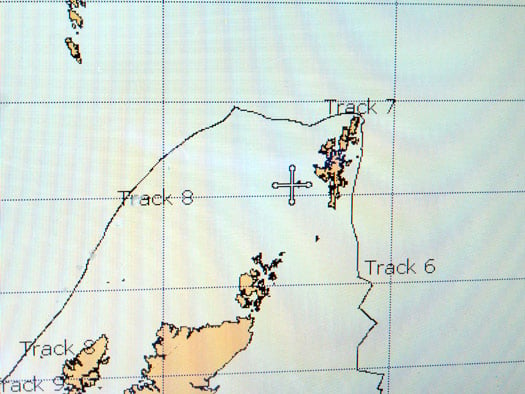
The win move. Although Lula Belle had taken a conservative route northward, once they'd rounded Muckle Flugga they took a flyer to try to get on the favoured side of a slow-moving yet very intense low. The plan succeeded, but they'd to go almost halfway to the Faroes for it to work. Photo: W M Nixon
By this time the faster boats had got back into a substantial lead, but here the situation suited the Irish duo. Those in front went battering and tacking into a fierce sou'wester, trying to get nearer the next turn at St Kilda. But the Irish boat's cunning scheme was to slug directly westward once they'd rounded Muckle Flugga, and not tack until they'd some real prospect of being in the harsh northerlies which they knew to be somewhere out beyond the very slow-moving low pressure area.
Thus they ended up midway between the Shetlands and Orkney to the southeast, and the Faroes to the northwest. As Liam Coyne drily puts it: "When you take a flyer like this and it works, it isn't a flyer any more – on the contrary, it's the only way". What they didn't know was that the boats trying to batter their way past the Outer Hebrides and down towards St Kilda had taken such a pasting that their immediate rival Rare had made a pit stop to rest up in the Shetlands, and others dropped out "for a while" only to find it had become a matter of retiring from the race.
But Lula Belle, having cast the dice to go west, had no option but to keep going, as she was nearly 50 miles west of the Rhumb Line, and more a day's fast sailing from any shelter. By this time, the Scottish forecasters had up-graded their gale warnings to severe storm Force 10. But thanks to their pluck in going west, Coyne and Flahive were up towards the northwest corner of the low, whereas the opposition were down in the southeast quadrant where the winds are usually significantly stronger.
Nevertheless at the change of the watch they shortened sail to the three-reefed main and the storm jib, even though the wind had fallen right away. Brian went off watch and then returned on deck after some sleep to find Liam had become becalmed, and had been so for some time. The centre of the low was passing straight over them. Now it was only a matter of time before the new wind came out of the north.
When it did it was nasty and cold, and the sea became diabolically rough and confused. But it was a fair wind, and they made on as best they could through the short northern night to close in on St Kilda. It was sunrise when they went past that lonely sentinel, and for once there was briefly sunshine to prove it, but it was watery bad weather sunshine as they settled in for the long haul to Ireland.
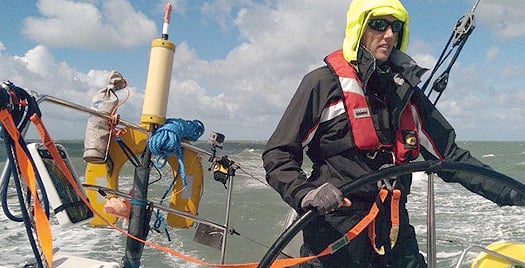
A great fair wind at last, but it was so very very cold despite some sunshine. Photo: Liam Coyne

Early morning as they pass St Kilda, with Lula Belle well placed in the race and her closest but higher-rated rivals astern. Photo: Iiam Coyne
By this stage the boat was very much their home, and they were both in good spirits. Despite the expectation of being in race mode for at least ten days and probably much more, they hadn't anything too much in the way of special easy-made instant food. When asked who had organized their stores and how they had been procured, Liam responded: "I just went to Tesco before the race, and filled her up. It's very easy when you've only two. I've had to do the stores for the boat with a crew of eight, and it's a pain in the neck".

Getting an omelette just right is tricky at the best of times, yet this masterpiece was created aboard Lula Belle off the coast of Donegal in 30 knots of wind. Photo: Liam Coyne
As for living aboard, they used the two aft cabins for sleeping, with hot bunking dictated by which was the weather side. In cruising mode, the First 36.7 is a very comfortable boat, but in racing things tend to get put behind the lee-cloth on the weather settee berth in the saloon, for the fact is the boat is designed to be raced with a crew of 7 or 8, and she tends to be a bit tender without six bodies on the weather rail.

Post-return temporary disorder in Lula Belle's saloon on her arrival back in Dun Laoghaire after sailing nearly 3000 miles in all since she'd last been in her home port. Though Brian (left) and Liam used the aft cabins for the short off-watch periods of sleep, the lee cloths on the settee berths were kept up to provide ready stowage for loose gear, preferably on the weather side. Photo: W M Nixon

Having the toilet on the fore-and-aft axis is very convenient at sea. And having an "extra-easy-cleaned" compartment is a real boon for hygienc. As for the funnel and hose, that's essential in a men-only boat in racing mode. Photo: W M Nixon
To my mind, one of the best things about the accommodation is the heads (toilet if you prefer). Some folk might think the compartment is too compact, but the loo is aligned fore and aft, so there simply isn't the room to fall about when using it. With the fore and aft alignment, security and comfort is guaranteed at those special private moments. It should be a law of yacht design that any boat which is going to be taken further than half a mile offshore is designed with a fore and aft loo.
Such thoughts would not have been forefront in the minds of Lula Belle's crew as they set the A3 spinnaker for the long run to Black Rock off the Mayo coast. Inexplicably, and as evidence of their stretched shoreside management support arrangements, they'd failed to bring along a new Code Zero spinnaker from sailmaker Des McWilliam. They'd gone for it despite it putting three extra notches on their rating, but it was nowhere to be found. After the race, it was discovered among a pile of 20 sails in Liam's Dublin office. But out in the lonely ocean southwest of St Kilda, it wasn't there when it was needed.
Yet it was soon needed even more. The smaller sail that was put up simply disintegrated after a brief period of use. It was inexplicable, but reasons weren't important just then, they were now down to just two spinnakers, and a very long way to go downwind to the finish.
So they nervously got out the A4, and soon it was up and drawing and Lula Belle was back in business, sailing fast for Ireland. Liam went below for a much-needed kip, and a sudden squall over-powered the boat. By the time he got back on deck she'd broached completely and the sail was shredded. They were down to just one spinnaker, and one in very dodgy condition at that. To add to their joys, in a crash gybe the mainsheet carriage disintegrated and they'd "ball bearings, it seemed like hundreds of them, all over the place...."
So there they'd been, passing St Kilda and knowing that, despite the lack of sailing instruments, they couldn't have done the leg from Shetland any better, and more importantly knowing from Yellowbrick that Rare was now well astern. Yet here they were now, only a few hours on the way, and they were down to one spinnaker and a jury-rigged mainsheet arrangement and a long way to go and the weather starting to suit Rare. Could it get any worse?
It did. Approaching the Blaskets, as usual the ship's batteries were draining with unreasonable speed. But the engine, when called upon, was dead. Dead as a dodo. It turned over but just wouldn't start. They knew that in very short order they'd be even further cut off from the outside world than they were already, with no chart plotter and without even the comfort of Yellowbrick to tell them how they stood in relation to the opposition. No autohelm whatever, either. And they'd 495 miles still to sail.
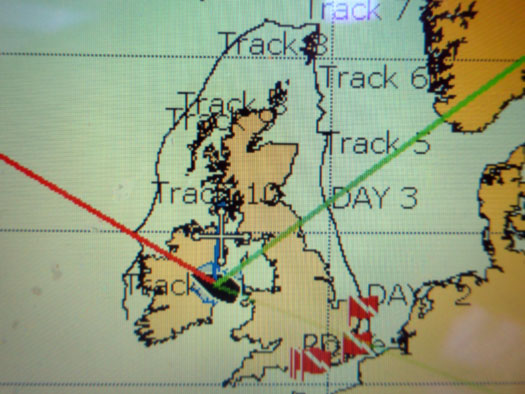
Moment of truth. The chart plotter's power dies just north of the Blaskets, the most westerly point of the 1802-mile course. Photo: W M Nixon

Getting on with it. Just south of the Blaskets, Brian goes aloft to try and clear the constantly-jamming Windex. Photo: W M Nixon
So they picked themeselves up, dusted themselves off, and started all over again. Brian went aloft to the waving masthead to free the Windex, which was in its jamming mood. Then progress was good heading down towards the Isle of Scilly. But even so, midway across, alone at the helm and steering and steering and steering, Liam admits to a very low moment.
They were now almost midway between Cowes and Dun Laoghaire, So he thought to himself: Why not just turn to port and head for home? Head for that comfortable NG34 berth in Dun Laoghaire marina, instead of struggling on with sails which were bound to shred even further, and leave them eventually straggling across the line completely dog last and with everything to fix, and then they'd have to turn round and plug into the early Autumn gales all the way back round Land's End to Dun Laoghaire?
And what then? he thought. Well, then in four years times we'll have to do the damned thing all over again. All, all, over again. So we'll just finish the bloody thing now, and get the T-Shirt, and that will be that regardless of how far we're placed behind everyone else, and good riddance to it all.
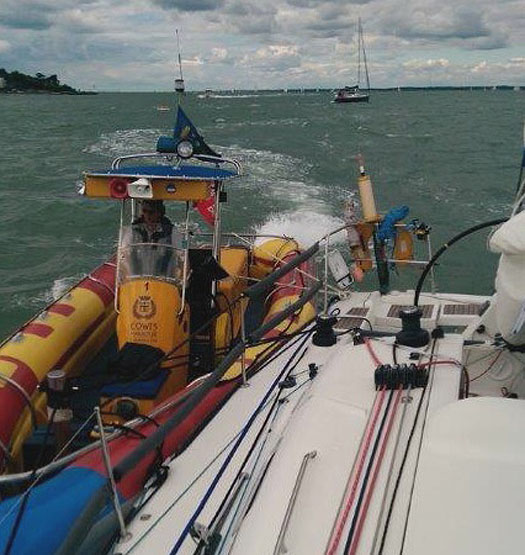
Welcome back. Knowing of Lula Belle's engine-less plight, the Cowes harbourmaster made sure they were brought into their Berth of Honour in style. Photo: Liam Coyne
So they stuck at it, they nursed the boat through the shipping separation zones at the Scillies without the spinnaker up because they knew the multiple gybing would destroy it, then as Rare didn't get past them until this stage, they knew that after such a long race she'd need to be 22 hours ahead at the finish and that was surely impossible. They were very much in with a shout of being better than last, so they nursed that mangled old spinnaker right up the English Channel (Mother Flahive's emergency sewing machine had done some marvellous repairs), and maybe the spreader ends were now showing out through the mainsail again, but what the hell, they got in round St Catherine's point and shaped their way back into the eastern Solent and on up to Cowes, and didn't Rare's crew and various bigwigs come out to tow them into port and confirm to them that they had indeed been there, they'd seen it, they'd done it, they'd won it., and now they could get the T-shirt.

Been there, seen it, done it, won it, got the T-shirt.....Liam Coyne back at the bar of the National YC five days after winning the two-handed division and two RORC classes in the 1802-mile Seven Stars Round Britain & Ireland Race 2014, and with his boat Lula Belle safely returned to her home port of Dun Laoghaire. Photo: W M Nixon
VOR Teams Share Their Fastnet Race Experiences
#VOR - Abu Dhabi Ocean Racing are making their return in the next Volvo Ocean Race after a distinguished debut showing in 2012, with new racing director Neal McDonald at the helm.
But the Ian Walker-skippered squad are already training hard with more than a year to go - and the recent Fastnet Race served as the first proper test of their skills.
The video above details the crew's experiences racing across the Celtic Sea from Cowes to Fastnet Rock and back - and their engaging tussle with fellow VOR squad Team SCA, whose finish time just edges them ahead.
Speaking of Team SCA, the all-female team's skipper Liz Wardley shared her own thoughts during the challenging non-stop Fastnet round trip:
The VOR website has links to similar video diaries from crewmates Sophie Ciszek, Sam Davies, Carloijn Brouwer and Annie Lush.
In other recent VOR news, Swiss luxury watch manufacturer IWC Schaffhausen has signed a new deal as the race’s official timekeeper for 2014-15 – and will once again sponsor the prestigious IWC Schaffhausen 24-hour Speed Record Challenge.
And the new one design VOR 65 may make its first appearance on the water as a finished vessel as early as tomorrow (23 September) after a detailed seven-month build with key components produced in various parts of the world.
Fastnet Race 2015 Starts from Cowes, 16th August 2015
#fastnetrace – The 46th edition of the Rolex Fastnet Race will start from Cowes, Isle of Wight, on 16th August 2015.
RORC Organisers Wrap up Record Breaking Fastnet Race 2013
#fastnetrace – New benchmarks continue to be set in the Rolex Fastnet Race. The Royal Ocean Racing Club's biennial flagship event this year saw the entry list sell out in less than 24 hours. Its position as the world's largest offshore yacht race was further confirmed when a record-sized fleet of 336 yachts set sail from Cowes on 11th August.
As ever, entries covered the complete range of offshore racing hardware. Among the biggest boats several cut throat match races were to take place. Of note, this year's Rolex Fastnet Race was the first occasion the world's two fastest offshore yachts, the 40 and 31.5m long maxi-trimarans, Spindrift 2 and Banque Populaire, had ever lined up in anger at a major event. Similarly, the European-flagged Esimit Europa 2 was to take on another 100ft maxi-monohull in Mike Slade's two-times monohull line honours winner, ICAP Leopard.
There was also a 72ft Mini Maxi match race, with Niklas Zennström's Rán 2, gunning to enter the history books by scoring a third consecutive overall win in the race, although she was up against her newer sistership, American Hap Fauth's Bella Mente. The Rolex Fastnet Race was also the first ever competitive outing for the fledgling all-women's Volvo Ocean Race entry, Team SCA, which used its VO70 training boat (the former Puma) to line up with the Rolex Fastnet Race monohull record holder, Abu Dhabi Ocean Racing, once again skippered by double Olympic medallist Ian Walker.
At the slower end of the fleet, it was fantastic that the gaff pilot cutter, Jolie Brise, was participating. She was winner of the first Fastnet Race back in 1925 (that subsequently caused the formation of the Royal Ocean Racing Club) and the only boat in the event's history to have won it three times.
Within the fleet, 292 boats were competing for the overall IRC prize. With the VO70s this year racing in the IRC fleet, an additional 43 grand prix boats - the Multihulls, IMOCA 60s, Class 40s and for the first time, the Figaros - were racing for their own class prizes. The giant IRC fleet was divided into classes, but with numerous one-design battles going on within this, including between the three Swan 60s, four Ker 40s, three Ker 39s, the fifteen First 40.7s or the twenty J/109s. Also of note were the twelve Sigma 38s, celebrating the 25th anniversary of the David Thomas one-design, that the RORC was integral to commissioning.
Significantly, the weather this year was upwind, with a nasty shift into the northwest putting the bigger boats hard on the wind across the Celtic Sea to the Fastnet Rock, followed by some light patches as a ridge encroached on to the race course mid-week. As it transpired, conditions this year very much favoured the smaller boats.
There was a key modification to the course this year. For the first time the traffic separation schemes (TSS) off Land's End, Fastnet Rock and Bishop Rock were deemed 'obstructions', no competitor permitted to enter them. This marginally lengthened the race course to 611 miles and provided competitors with choices over how to pass the TSSes.
The ante had also been increased on the media and communications side with Fastnet Radio providing not only live audio coverage from the event, but also live video and commentary from the start of the race for the first time.
The Royal Ocean Racing Club had teamed up with Inmarsat, the leading provider of global mobile satellite communications services to enable competitors to send content, including video, audio, blogs and social media, back during the race. To help achieve this, eight boats were provided with Inmarsat FleetBroadband. Four of these were lent FleetBroadband 150 terminals and four others, already equipped with FleetBroadband 500 and 250, were provided with complimentary airtime.
The Sunday lunchtime start on the Solent provided a magnificent spectacle with the giant multihulls leading the charge down the Solent followed by the IMOCA 60s - this fleet including the winners of the last four Vendée Globe round the world yacht races.
Between the maxi-multihulls, the Dona Bertarelli and Yann Guichard-skippered Spindrift 2 was at the front of the fleet over the first night, but made a small error passing west of the TSS off Land's End, while the competition went east. This allowed the MOD70 Oman Air-Musandam to lead into the Celtic Sea. In turn she was subsequently overtaken by the Armel le Cleac'h-skippered Banque Populaire with the mighty Spindrift 2 only regaining the lead just before Fastnet Rock. These two boats then match-raced back to Bishop Rock, their sheets cracked finally with the longer Spindrift 2 slowly pulling ahead.
The approach to the finish line in the early hours of Tuesday morning coincided with the land breeze shutting down. As Spindrift 2 parked, Banque Populaire was able to close to within half a mile of her. Ultimately Spindrift 2 just managed to stay ahead, arriving at the finish line off Plymouth Breakwater in an elapsed time of 38 hours 53 minutes and 58 seconds - some way off the 32 hour 48 minute course record this same boat set in the stronger winds of the 2011 race.
A more devastating finish line park-up occurred between the leading monohulls 24 hours later. Esimit Europa 2, skippered by triple Olympic medallist Jochen Schümann, managed to ghost into Plymouth Sound to claim monohull line honours. Her elapsed time of 60 hours 27 minutes and 49 seconds was substantially outside Abu Dhabi Ocean Racing's 2011 record of 42 hours 39 minutes.
Mike Slade's ICAP Leopard came off worst, with Abu Dhabi Ocean Racing able to pip her at the post, the UAE VO70 crossing the line at 07:25 on the Tuesday morning.
As Ian Walker put it: "There was a bit of land breeze in the harbour and Leopard was completely marooned. We came in with the new wind from behind. The same could have happened to us, but fortunately we managed to get ourselves into a position where we went around the outside, away from the cliff."
With the wind filling in, over the next 12 minutes there was a diverse range of finishers:
ICAP Leopard (100ft maxi) 07:29:43
MACIF (doublehanded IMOCA 60)- 07:32:19
Maître CoQ (doublehanded IMOCA 60) 07:33:16
Bella Mente (72ft Mini Maxi) 07:33:53
Rán 2 (72ft Mini Maxi) 07:35:19
Team SCA (VO70) 07:37
Hugo Boss (doublehanded IMOCA 60) 07:39:38
In the VO70 battle, Abu Dhabi Ocean Racing had been overtaken by Team SCA at Start Point. The girls crew (albeit including three male coaches, VOR veterans Brad Jackson, Joca Signorini and Pepe Ribes) had led around the Fastnet Rock and as they powered back to the southeast on the Tuesday afternoon, impressively had taken the lead overall in the Rolex Fastnet Race fleet under IRC. However Walker's higher rated VO70 passed them on the approach to Bishop Rock and never looked back.
The Mini-Maxi show down seemed to be going well for Bella Mente. Higher rated, more powerful and newer than the defending champion, she was leading Rán 2 on handicap until she fell into a light patch close to Bishop Rock, causing her painstakingly earned 8 mile advantage to be halved. As a result Niklas Zennström's team had the small consolation of beating Bella Mente under IRC, while conditions conspired against their achieving a third consecutive overall Rolex Fastnet Race victory.
"We had a good race, it's just a bit of a shame we couldn't finish it off - the wind gods just weren't on our side," said former Volvo Ocean Race winning skipper Mike Sanderson, helmsman on Bella Mente.
The leading IMOCA 60s' performance was the most exceptional of this group. Despite their being some 10ft shorter and sailed doublehanded, the top two not only beat the Mini Maxis, but finished between the two canting keel VO70s. Strangely the IMOCA 60 podium was not only in the same order but also had, relatively, similar deltas to this year's Vendée Globe solo non-stop round the world race, with Francois Gabart's MACIF narrowly beating Maitre CoQ (ex-Banque Populaire) and with British skipper Alex Thomson on his generation older Hugo Boss, once again coming home third.
"It was a crazy finish," commented Thomson of the park-up. "When we came round Ram Head we were only expecting to see a couple of boats, but we could see Leopard and everyone else right there!"
Come Thursday, and with the smaller boats looking ever stronger on handicap, a French whitewash seemed on the cards.
The VO70s and maxis had been knocked off the top spot in IRC Canting Keel, by the smallest boat in the class, the Mach 45, Cartouche, skippered by a works team from manufacturers JPS Production in La Trinité -sur-Mer, led by Nicolas Grouleau. This was the latest French win following those in the Multihull and IMOCA 60 classes and the Class40. In the latter, after leading for much of the race, Spain's Gonzalo Botin, sailing a brand new design from his elder brother Marcellino, was finally beaten by the race favourite, Sebastien Rogues aboard GDF Suez, a Sam Manuard-designed Mach 40, from the same yard as Cartouche.
Class Zero and Class One were the only ones to fend off the French onslaught. In the former, the Mini Maxis plummeted as the smaller boats came in with breeze, and finally it was Johnny Vincent's TP52 Pace that came out on top. On corrected time she was 2 hours 20 minutes ahead of the Swan 80, Plis Play, with the furthest travelled yacht, Geoff Boettcher's Reichel Pugh 51 Secret Men's Business 3.5 from South Australia, claiming third place.
Pace's victory came despite being upwind most of the way to the Rock with a shift to the south then putting them on a tight reach back. "We knew we'd be alright downwind against the other boats," said the team's Volvo Ocean Race winning navigator, Jules Salter. "The last bit from Bishop Rock was pretty fast."
Inmarsat Fleet Broadband on board eight competing yachts allowed competitors to send back audio, video, stills & blogs direct from the race course.
Another British boat came out on top in IRC One, with Andrew Pearce's Ker 40, Magnum 3, finishing ahead of Frenchman Laurent Gouy's Ker 39 Inis Mor, with the other three Ker 40s all in the top seven.
"Tactically it was an upwind race, which caused us some concern, because this is more of an off-the-wind, surfing-type boat," said Pearce of his steed. "We were thinking this race would be better for the classic 40 footers."
They pulled into the lead crossing the Celtic Sea outbound to Fastnet Rock and enjoyed a blistering ride to Bishop Rock, on the edge, under fractional spinnaker. "We were coming down there at 17 knots, on our ear, in the driving rain and a black-as-ink night - it was very challenging," recounted Pearce. "We had to rotate drivers every hour or less, because it was very difficult."
Otherwise the race was a clean sweep for the French. The impeccable Gery Trentesaux, sailing the M34 Patton, Courrier Vintage, came out on top in IRC 2 despite this powerful Marc Lombard design preferring stronger conditions. "We didn't sail so badly," said Trentesaux. "We were lucky to have some reaching between the Pantaenius mark and the Scilly Isles. We hit 15 knots - not bad for a small boat."
Two handed winner
On the Thursday afternoon it became clear that history was in the making with the first ever doublehanded crew set to take the top prize under IRC.
Cherbourg-based father and son team, Pascal and Alexis Loisin, and their 33ft JPK 1010, Night And Day, had already made an impression, when, again sailing doublehanded, they had won the RORC Channel Race outright at the end of July.
Pascal, a 53-year-old surgeon and past competitor in the Transquadra transatlantic race and Alexis, 29, who is a professional Figaro sailor, had won the Rolex Fastnet Race doublehanded class in 2005 aboard a J/105. This time they were 20 minutes faster on corrected time than Noel Racine's second placed JPK 1010 sistership, Foggy Dew - no mean feat, given Foggy Dew was well sailed by a full crew.
The smaller boats, like Night And Day, benefitted from sailing the latter part of the crossing to the Fastnet Rock on a reach and were able to reach back. They then enjoyed good breeze all the way to the finish.
Night And Day was certainly well optimised for IRC, with a short fixed bowsprit and a spinnaker pole instead of the standard JPK 1010 retractable prod, however Alexis said of the reasons for their victory: "We sail together all the time and we have good tactical knowledge - our tactics were good all time. We made sure we slept well and we had good weather."
Impressively while Night And Day claimed IRC Three, lower rated JPK 1010s, all fully crewed boats, took the top four spots in IRC Four, with Foggy Dew beating the Belgium crew on Vincent Willemart's Wasabi - the same positions the two boats occupied at the top of IRC Three two years ago.
Overall France took the five top spots under IRC and eight of the top 10, and all of the Grand Prix classes, with the exception of the Figaro class, won by an Anglo-French doublehanded team of Nikki Curwen and Charlie Dalin. Andrew Pearce's Ker 40, Magnum 3, was the top British boat.
Generally the move across the Cattewater to Plymouth Yacht Haven to accommodate the bigger fleet was considered a success, while the Friday afternoon prizegiving on Mountbatten Green coinciding with the arrival of Jolie Brise, made for a memorable conclusion to another historic Rolex Fastnet Race.
The next and 46th edition of the Rolex Fastnet Race will start from Cowes, Isle of Wight, on 16th August 2015.
Sir Robin Blasts BBC's Non-Coverage of Fastnet Race
#FastnetRace - A legend of British sailing has slammed the BBC for "sea-blindness" in failing to cover the start of last week's Rolex Fastnet Race.
As The Daily Telegraph reports, Sir Robin Knox-Johnston told Yachting World that the start of this year's race from Cowes to Fastnet Rock and back "could not have been more spectacular or received more publicity all over the world.
"However, there was one major exception - the national BBC news and sports news. It was full of football, athletics and cricket, but unbelievably ignored the start completely."
Sir Robin added that he feels "we have forgotten we [British] are a maritime nation surrounded by waters and sailing is one of our most successful sports. Sailing is not elitist."
His comments were echoed by Olympic gold medallist Sir Ben Ainslie, who conceded that improvements could be made in the presentation of sailing events to make them easier for TV viewers to follow.
The 2013 Rolex Fastnet Race was won last Thursday by father-son duo Pascal and Alexis Loison, the first time a double-handed crew has won the race in its 88-year history.
The Daily Telegraph has much more on the story HERE.

